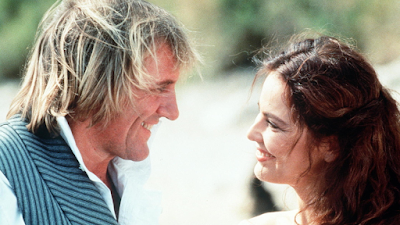The selector of the novel, KumKum, was guided by a comment of Shashi Tharoor, the notable Indian parliamentarian, man of letters, diplomat, and former Under Secretary General of the United Nations. It seems even his wide education had not prepared him to read Antic Hay; he found it took him considerable attention and work in the library to track down the numerous allusions and references in the book to all things cultural from books to art, and music to philosophy. He learned a lot from the furniture of Aldous Huxley’s mind and it impelled him to have as catholic an interest as Aldous Huxley in everything that belongs to the culture of humankind.
Furthermore,
Priya had asked KumKum to select a ‘difficult’ book. In consequence KRG readers
spent a great deal of time (those few who had the stamina) to pursue the
activities of a motley cast of Londoners going about their life, loves, and
obsessive activities in 1920s London. It belongs to novels of the genre that
treat life in London – we have read another London novel – by Virginia Woolf, Mrs Dalloway:
https://kochiread.blogspot.com/2021/02/virginia-woolf-mrs-dalloway-jan-29-2021.html
There
is a web site www.LondonFictions.com
that considers more than 80 novels celebrating London and the unique essence
essence of that city of such pre-eminence in English literature. Here is the
particular article dealing with Antic Hay:
https://www.londonfictions.com/aldous-huxley-antic-hay.html
It is a post-World War I London in which people have lost their moorings and the comfortable cultural pillars of orthodoxy that supported an untroubled Victorian civilisation. Here you see painters jostling with critics, sculptors trying to find space for their art in a world where the solidity of stone and marble have dissolved; social climbers making out with aspiring inventors; brilliant conversations between bespoke tailors and their exalted customers; dancehalls buzzing with the latest imported jazz bands to the music of which flighty young women in unconventional dress perform gyrations; men and women circumambulating the city aimlessly; and love, mostly of the kind where Cupid’s arrow misses the mark.
The
cultural education Shashi Tharoor referred to is found in the numerous
fragments of untranslated French, Italian, Latin, and German quotes. Pursuing
them to their sources and meanings, and relating them to the context for the
novel, affords the leisured reader some satisfaction that shee is now among the
initiated. If you are a fan of opera it’s joy to come across Don Juan’s seductive
thrust from the famous aria in Mozart’s Don
Giovanni:
Là ci
darem la mano,
Là mi
dirai di sì.
Vedi,
non è lontano;
Partiam,
ben mio, da qui.
(There
you will give me your hand,
There
you will tell me 'yes’.
You
see, it is not far,
Let's
leave, my beloved.)
Zerlina
answers she’d like to respond to the invitation, but can’t; her heart trembles.
Mrs. Viveash (the Zerlina of the moment) answers to Gumbril (who fancies
himself as Don Juan), with a bar from the opera:
Felice,
è ver, sarei, (True, I could be happy.).
Evocations
of music abound and this one yields beauty when followed to its source, and the
reader can listen from minute 2:50 onwards
https://www.youtube.com/watch?v=iJnJjpMdT3Y
Don Giovanni – Come my beloved says Don Juan to Zerlina
The
novel’s title and the epigraph that stands at the front of the book, are taken
from the play Edward II by Christopher Marlowe:
My
men like satyrs grazing on the lawns
Shall
with their goat-feet dance the antic hay
There
is a colourful scene in a jazz club showing the repetitive, frenetic
movement in Chapter 15:
Scene from Ch 15: Theodore and Myra are dancing at a revue or cabaret club to a jazz band where the 'blackamoors' are playing jazz at a dancing club
Huxley paints a wonderful picture of the dance hall proceedings:
“What’s
he to Hecuba?” The grinning blackamoors repeated the question, reiterated the
answer on a tone of frightful unhappiness. The saxophone warbled on the verge
of anguish. The couples revolved, marked time, stepped and stepped with an
habitual precision, as though performing some ancient and profoundly
significant rite. Some were in fancy dress, for this was a gala night at the
cabaret. Young women disguised as callipygous Florentine pages, blue-breeched
Gondoliers, black-breeched Toreadors circulated, moon-like, round the hall,
clasped sometimes in the arms of Arabs, or white clowns, or more often of untravestied
partners.
Interesting that ‘blackamoors’ was the term in vogue at the time in London for Africans.
One of the items from which Huxley derives much satire is the epiphany that descends on Gumbril when he thinks up inflatable rubber inserts as a way of safeguarding clients when they fall. Gumbril discusses the invention with his tailor Bojanus and decides to quit his day job, in order to develop, advertise, and sell his revolutionary pneumatic ‘Gumbril’s Patent Small-Clothes.’ Here is a modern fashion designer’s version, although he acknowledges no debt to Gumbril or Huxley in this 1923 novel:
Inflatable trousers – designer
Harikrishnan’s methodology for inflatables was adopted from ‘morphing’, the
traditional method of distorting photographs by assembling fragments of the
same subject taken at different perspectives
I will only point out that it is a book written by a member of what I may call the war-generation for others of his kind; and that it is intended to reflect – fantastically, of course, but none the less faithfully – the life and opinions of an age which has seen the violent disruption of almost all the standards, conventions and values current in the previous epoch.




























,%20cover%20of%20the%20Cha%CC%82teau%20d'If,%20the%20prison%20where%20Edmond%20Dante%CC%80s%20was%20held%20captive%20%E2%80%93%20with%20an%20Introduction%20Luc%20Sante.png)






